*NURSING > TEST BANK > Chapter 18: Assessing Children: Infancy Through Adolescence ; Bates’ Guide to Physical Examination (All)
Chapter 18: Assessing Children: Infancy Through Adolescence ; Bates’ Guide to Physical Examination and History Taking, 12th Edition
Document Content and Description Below
Bates’ Guide to Physical Examination and History Taking, 11th Edition Chapter 18: Assessing Children: Infancy Through Adolescence Multiple Choice 1. During the delivery of a male infant, you are ... there to assess the Apgar score. He was born through an intact pelvis and had no complications during labor or delivery. At 1 minute he is pink all over and grimaces. He is flexing his arms and legs occasionally. He is breathing well and his heart rate is 110. At 5 minutes he is still pink all over but now is crying vigorously, with active movement. His respiratory effort is good and his heart rate is 130. What is his Apgar score? A) 8 at 1 minute, 10 at 5 minutes B) 7 at 1 minute, 9 at 5 minutes C) 9 at 1 minute, 10 at 5 minutes D) 8 at 1 minute, 9 at 5 minutes Ans: A Chapter: 18 Page and Header: 745, Assessing the Newborn Feedback: In checking the Apgar, five things are looked at during the 1-minute and 5-minute marks. The color, reflex irritability, muscle tone, respiratory effort, and heart rate are evaluated. In this case, at 1 minute he received 2 points for being pink all over, 1 point for grimacing, 1 point for flexion of the arms and legs, 2 points for strong respiratory effort, and 2 points for a heart rate over 100. This gives a 1-minute total of 8. At 5 minutes he was given 2 points for being pink all over, 2 points for vigorous crying, 2 points for active movement, 2 points for strong breathing, and 2 points for a heart rate over 100. This gives a 5-minute total of 10. These are normal, healthy Apgar scores. 2. A 24-year-old mother who is a smoker and cocaine addict gave birth at 39 weeks to a 2,000- gram female infant who is in the neonatal intensive care unit. Using the Intrauterine Growth Curve chart, you determine whether the infant's weight is appropriate for her gestational age. In which category does the infant best fit? A) Large for gestational age B) Normal for gestational age C) Small for gestational age Ans: C Chapter: 18 Page and Header: 746, Assessing the Newborn Feedback: For a 39-week infant, any weight less than 2,500 grams would be considered small. Intrauterine growth retardation and low birth weight would be expected in a smoker who also abuses cocaine. 3. A mother brings her 16-month-old son in for an evaluation. She is afraid he is not meeting his developmental milestones and wants to know if he should be sent to therapy. He was the product of an uneventful pregnancy and a spontaneous vaginal delivery. His Apgar scores were 7 and 9. Until reaching a year old the mother believes he was hitting his milestones appropriately. You decide to administer the Denver Developmental Screening Test. You find that he is using a spoon to eat with and can take off his own shoes and shirt. He can build a tower of two cubes and dump raisins. His vocabulary consists of at least 10 words. He can stand alone and stoop and recover, but he is unable to walk without holding onto someone's hand. What type of developmental delay does he have? A) Personal/social B) Fine motor C) Language D) Gross motor Ans: D Chapter: 18 Page and Header: 751, The Health History Feedback: By 16 months a child should be able to walk unaided and even walk backwards and run. This child was referred to physical therapy and did well. 4. A foster mother brings a 4-year-old child to see you for an evaluation. She has had custody of the girl for 2 weeks. She knows that the child was born in your state and that her maternal grandmother had custody for 6 months. She received good medical care during that time, but after her biologic mother obtained custody the child was abused and has had no further medical care. She says the child has had many behavioral problems and seems to be very behind on her developmental tasks. When you examine the child you notice short palpebral fissures, a wide nasal philtrum, and thin lips. Her cardiac, pulmonary, musculoskeletal, and abdominal examinations are normal. Her Denver Developmental Screening Test shows most of her milestones have occurred only through the 24th month. What form of congenital retardation is she most likely to have? A) Fetal alcohol syndrome B) Congenital hypothyroidism [Show More]
Last updated: 1 year ago
Preview 1 out of 13 pages
Instant download
.png)
Instant download
Reviews( 0 )
Document information
Connected school, study & course
About the document
Uploaded On
May 06, 2022
Number of pages
13
Written in
Additional information
This document has been written for:
Uploaded
May 06, 2022
Downloads
0
Views
88


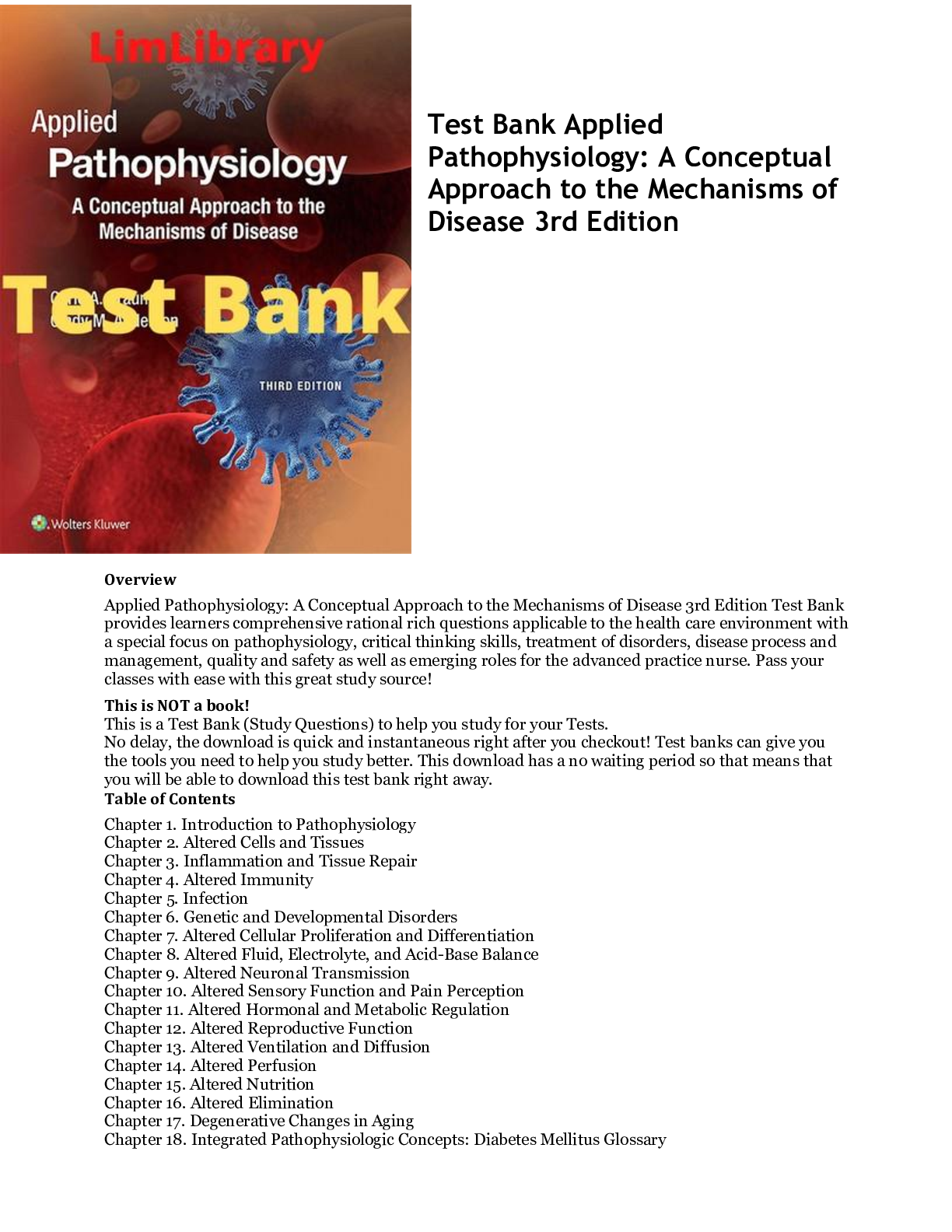

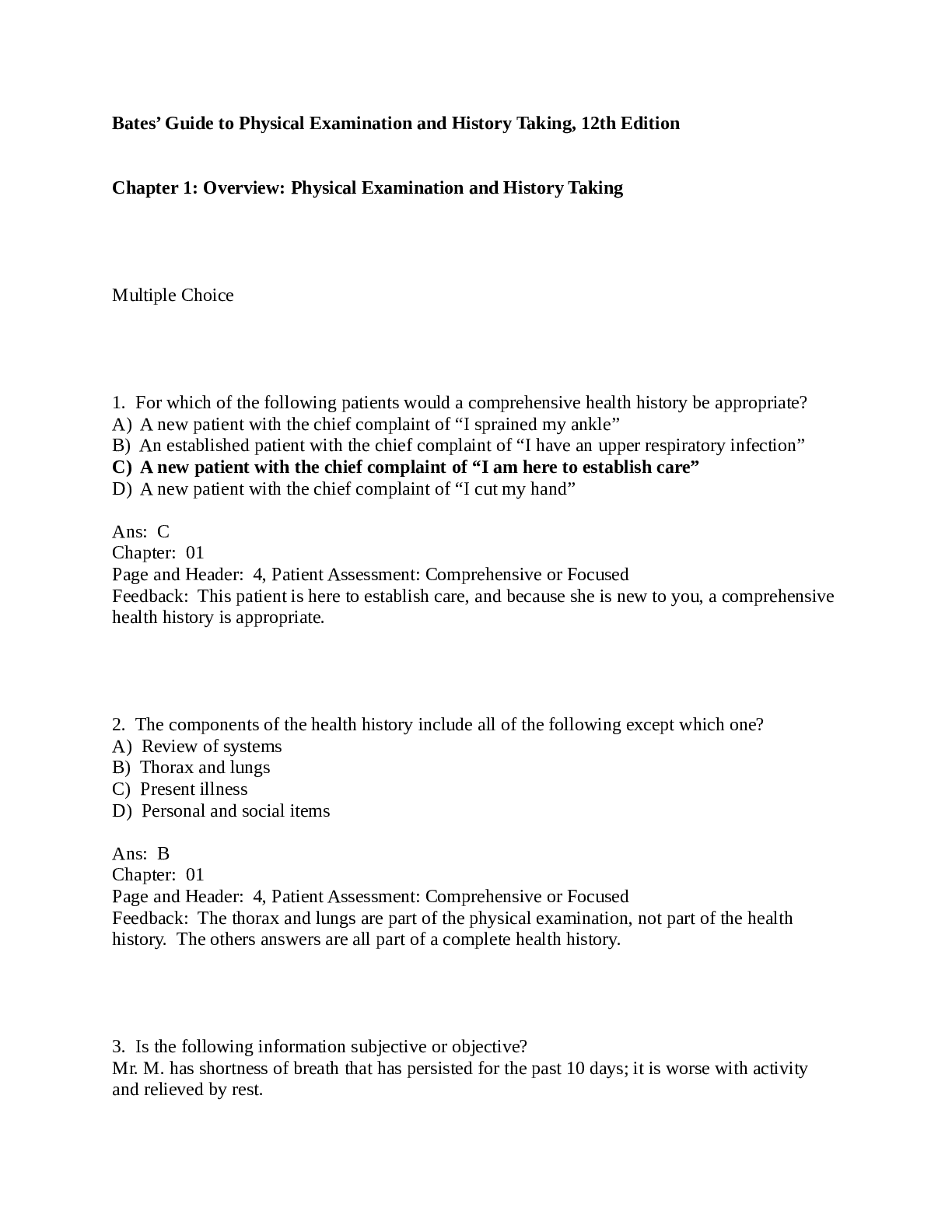

.png)
.png)
.png)

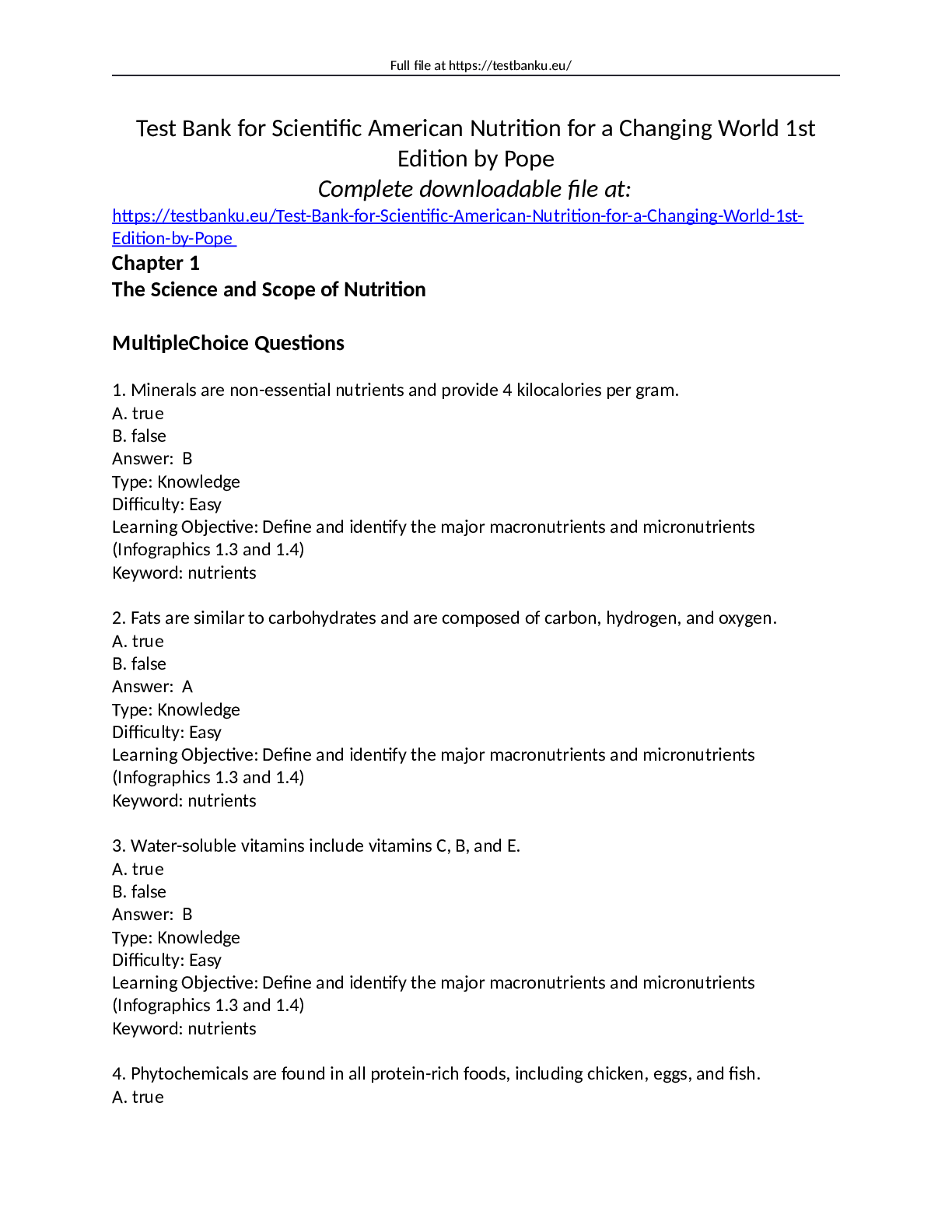
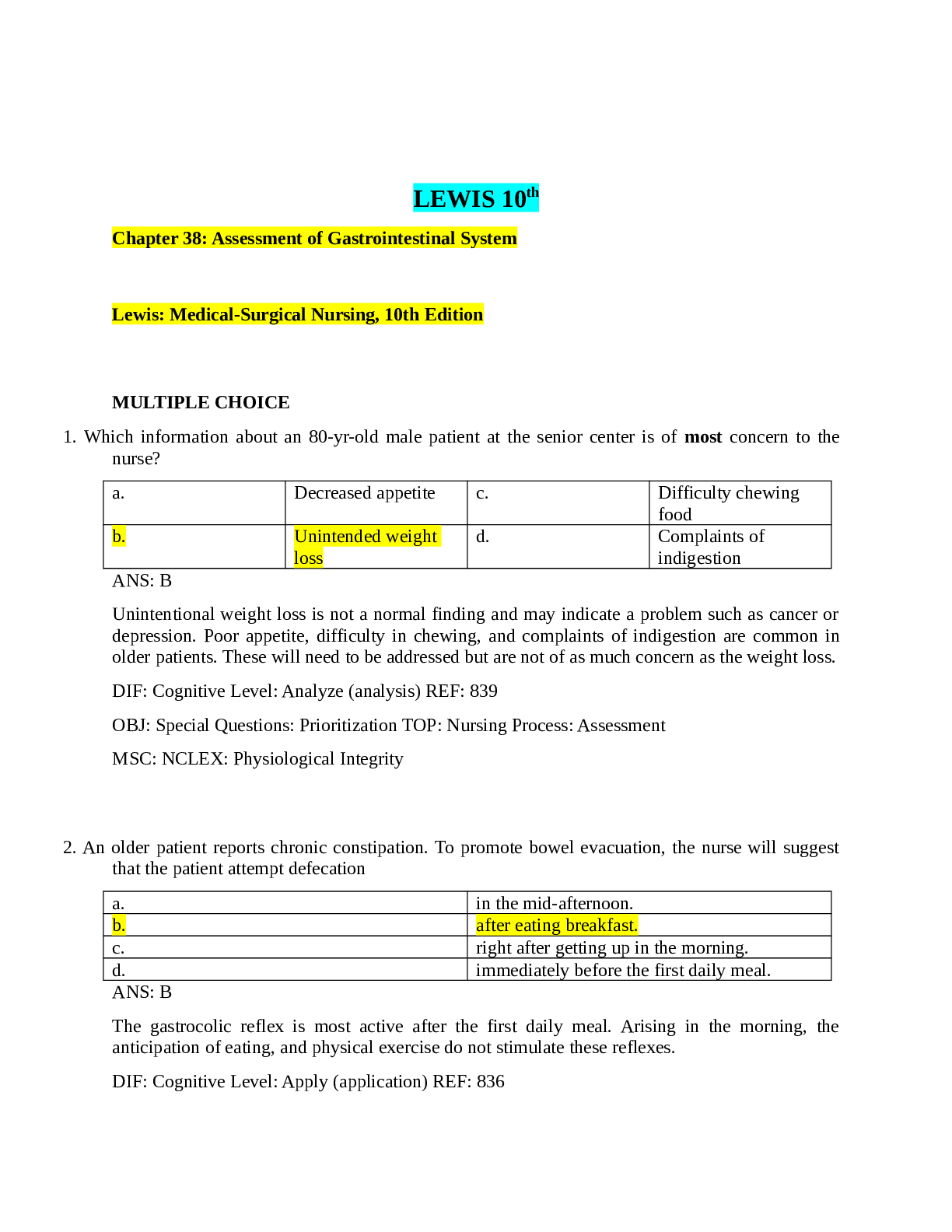

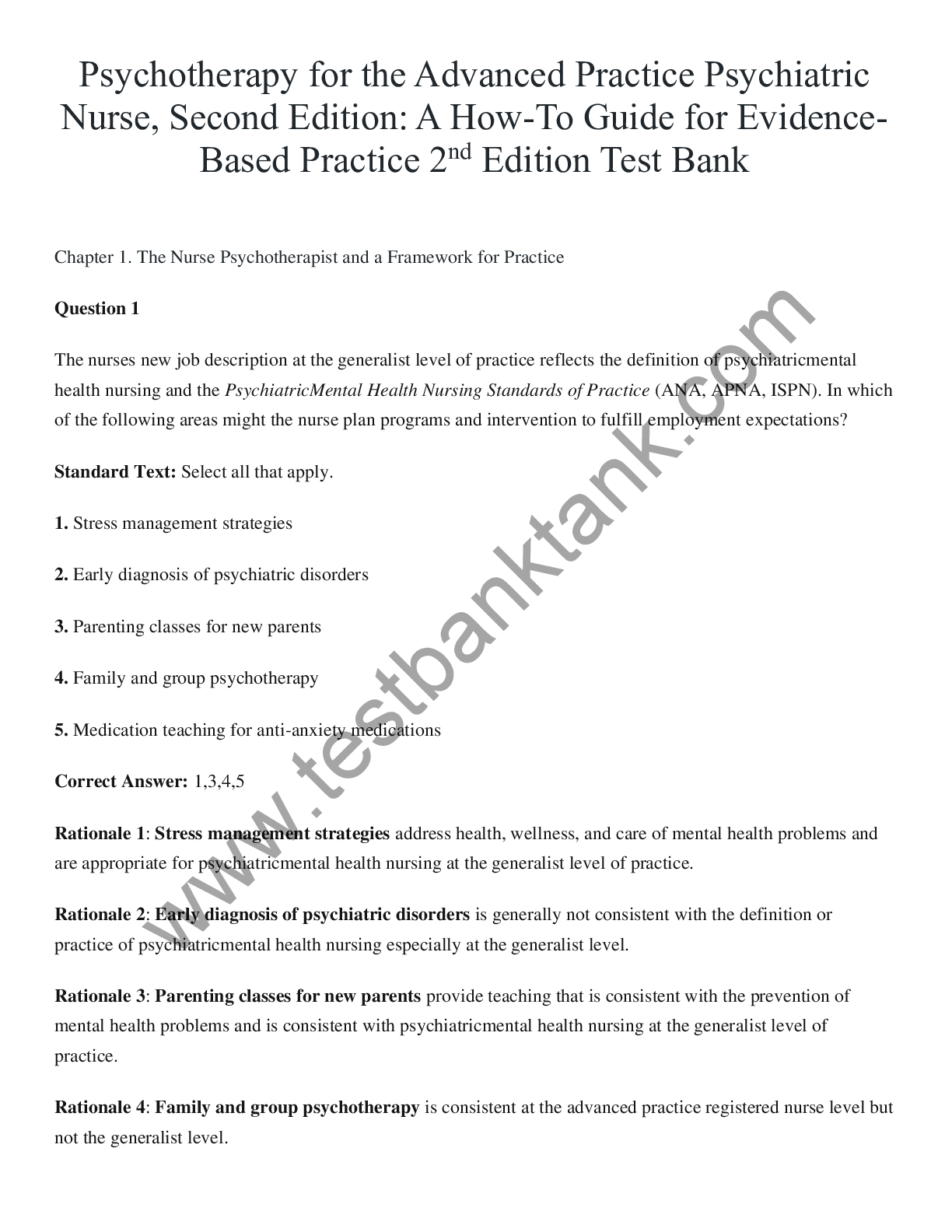
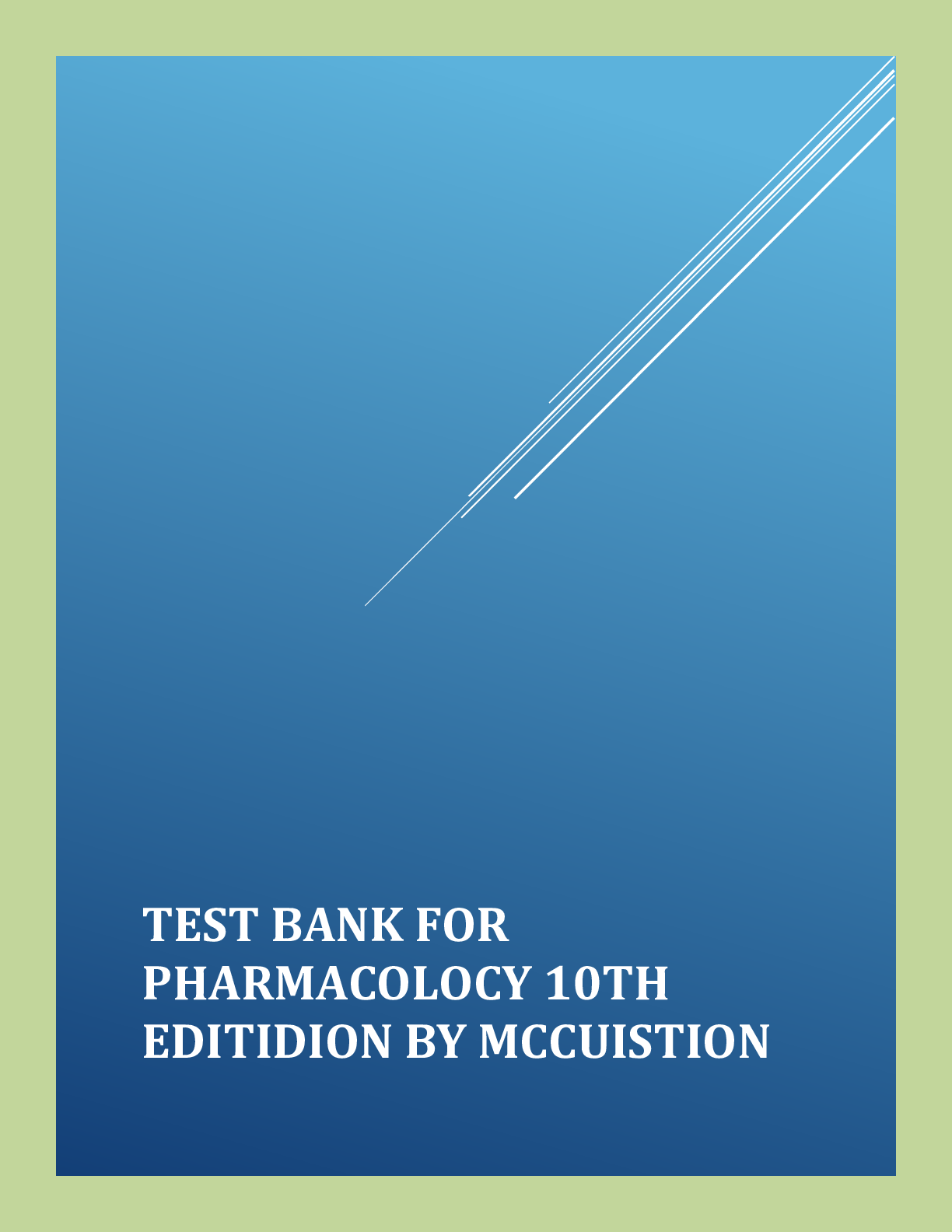
.png)



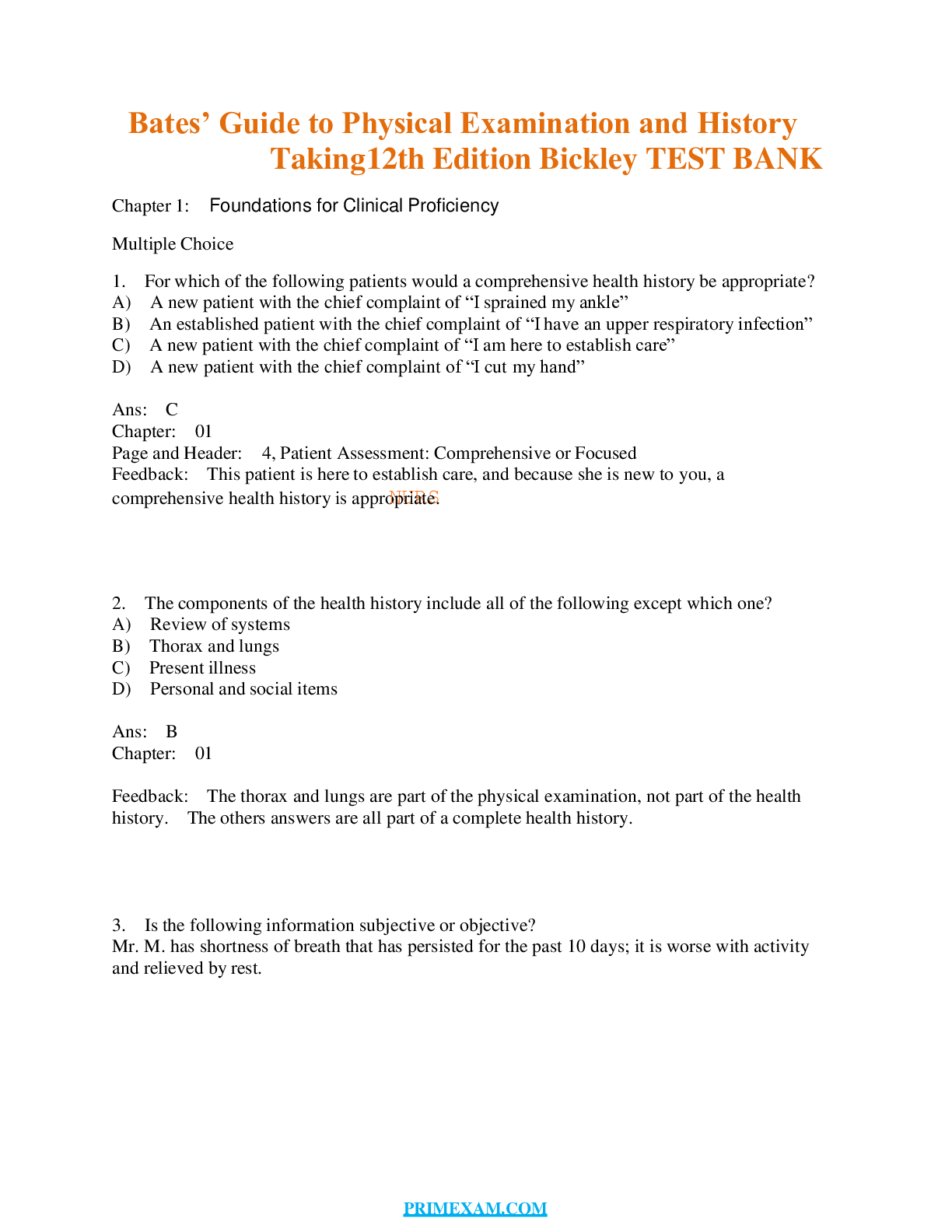
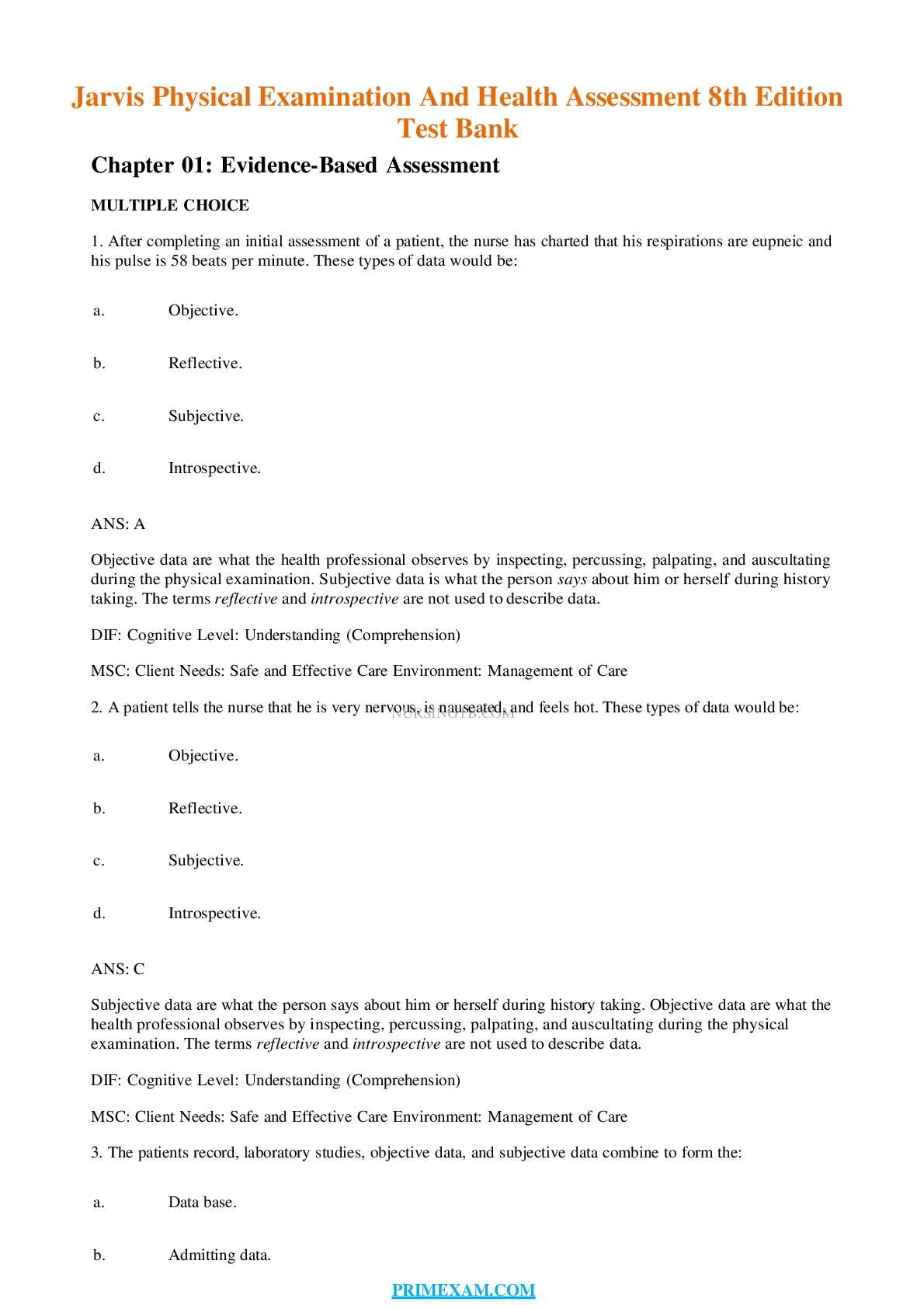
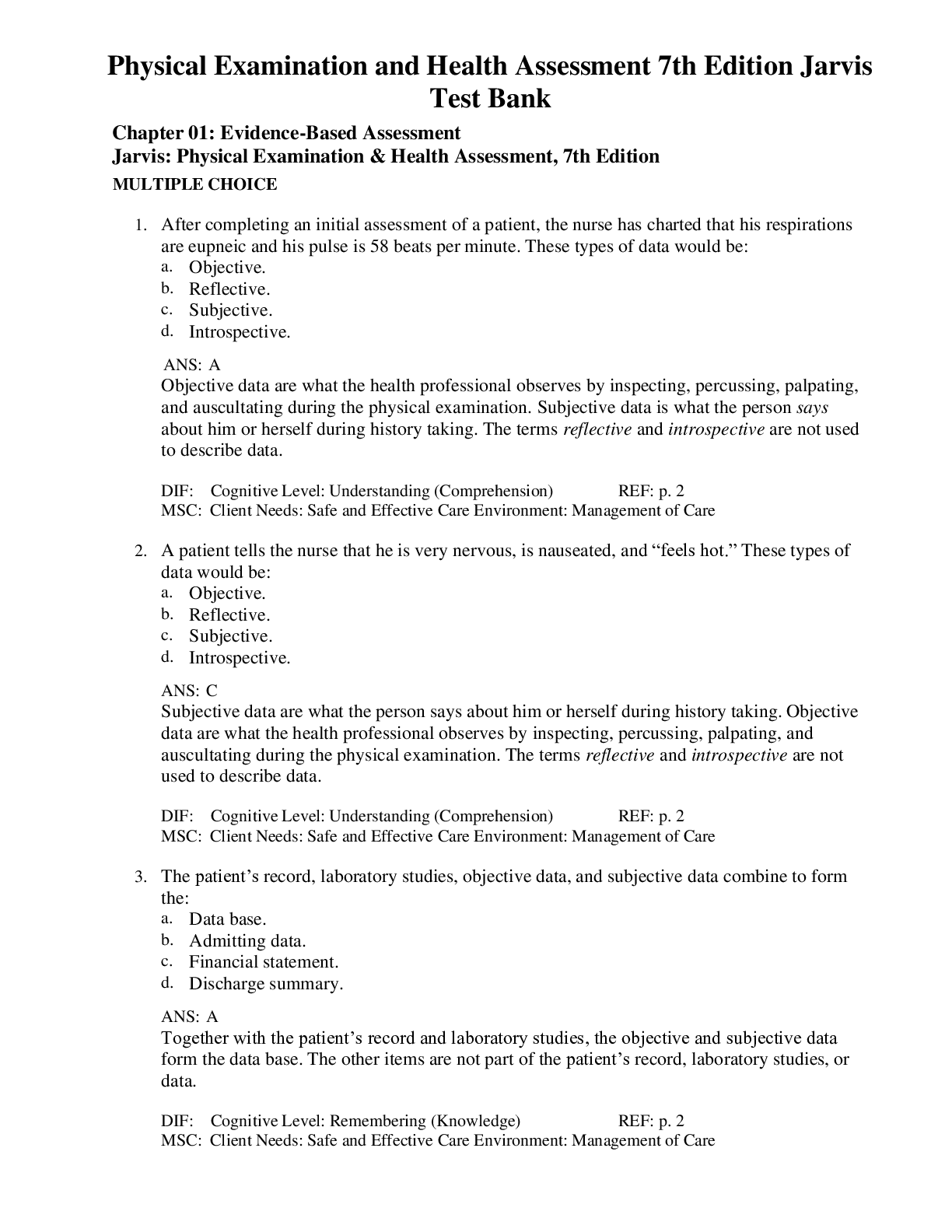
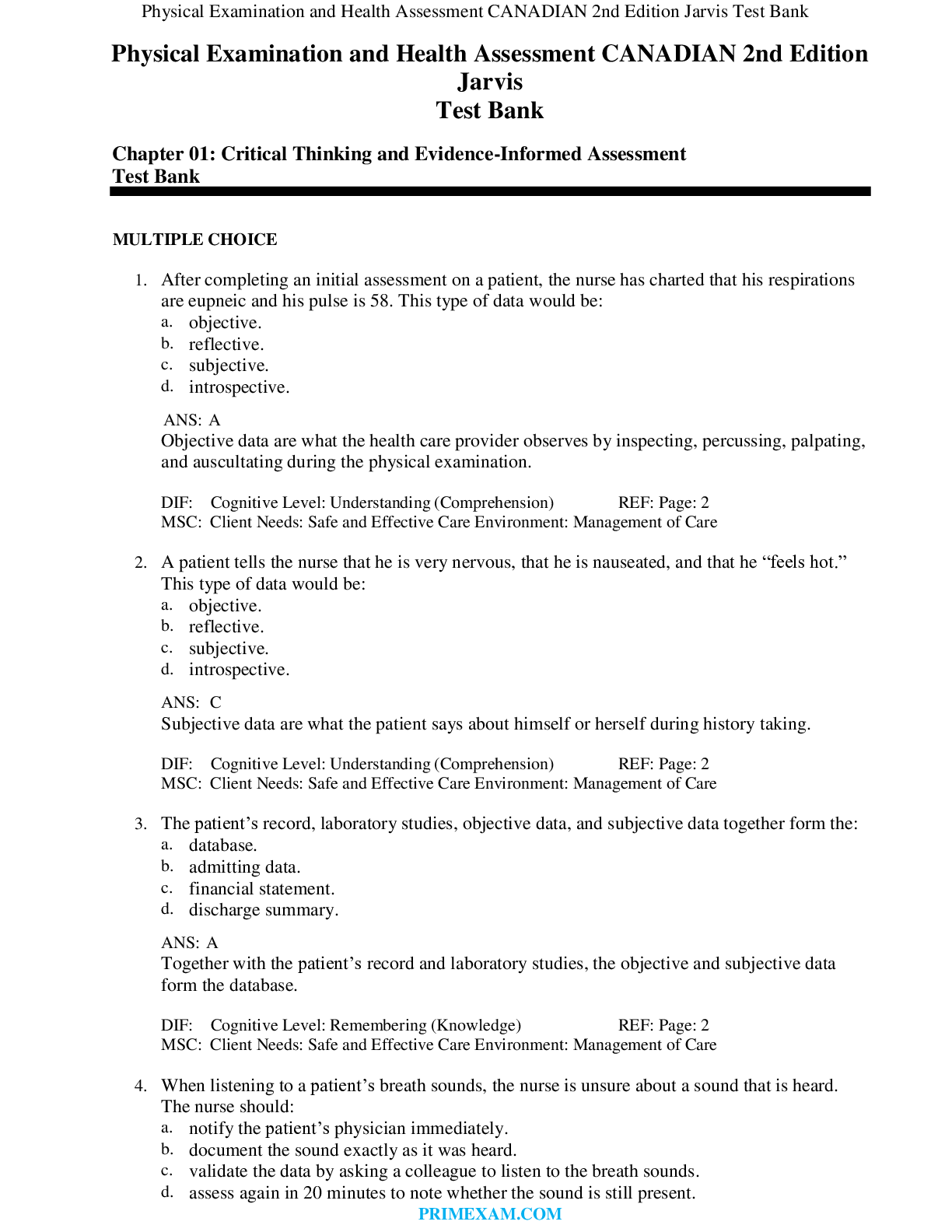
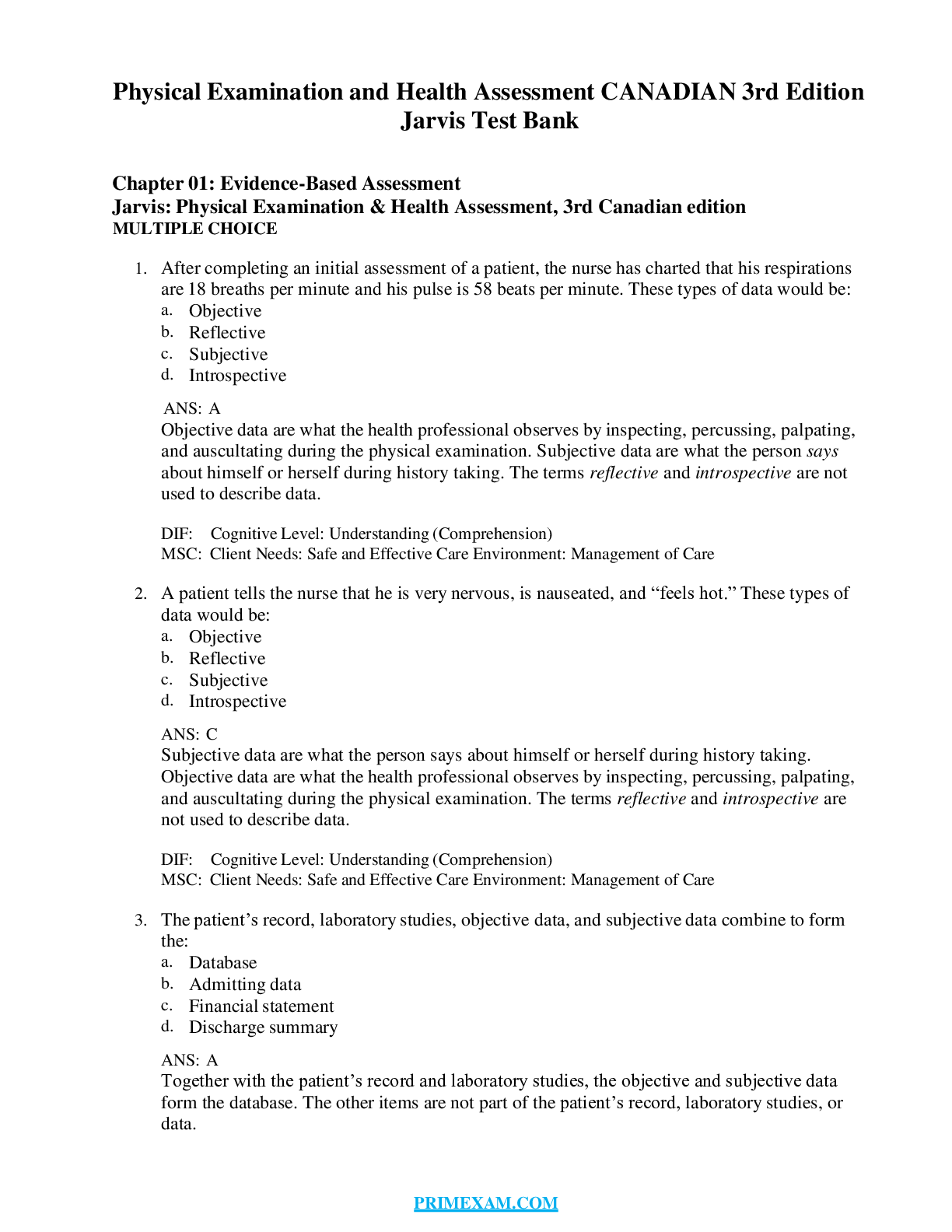

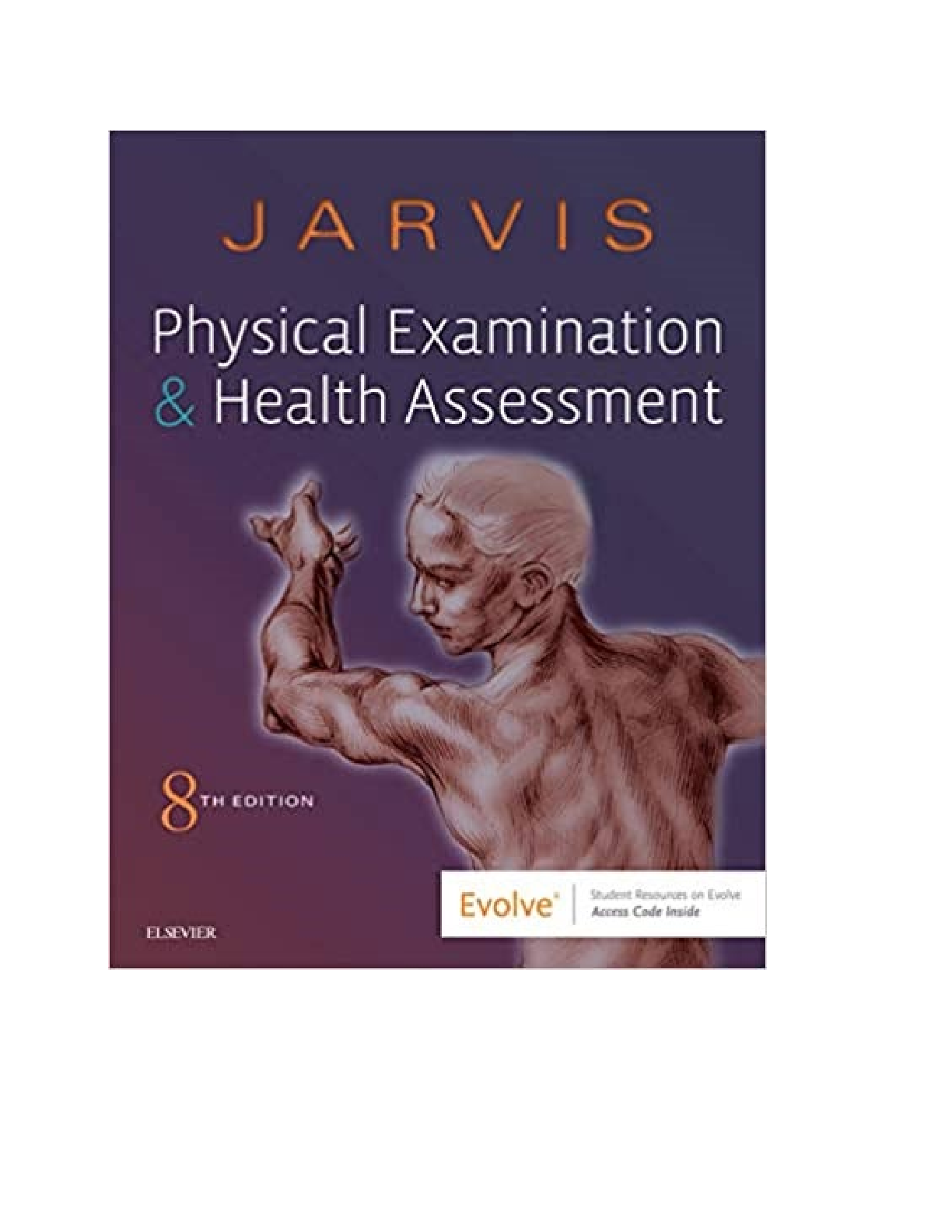
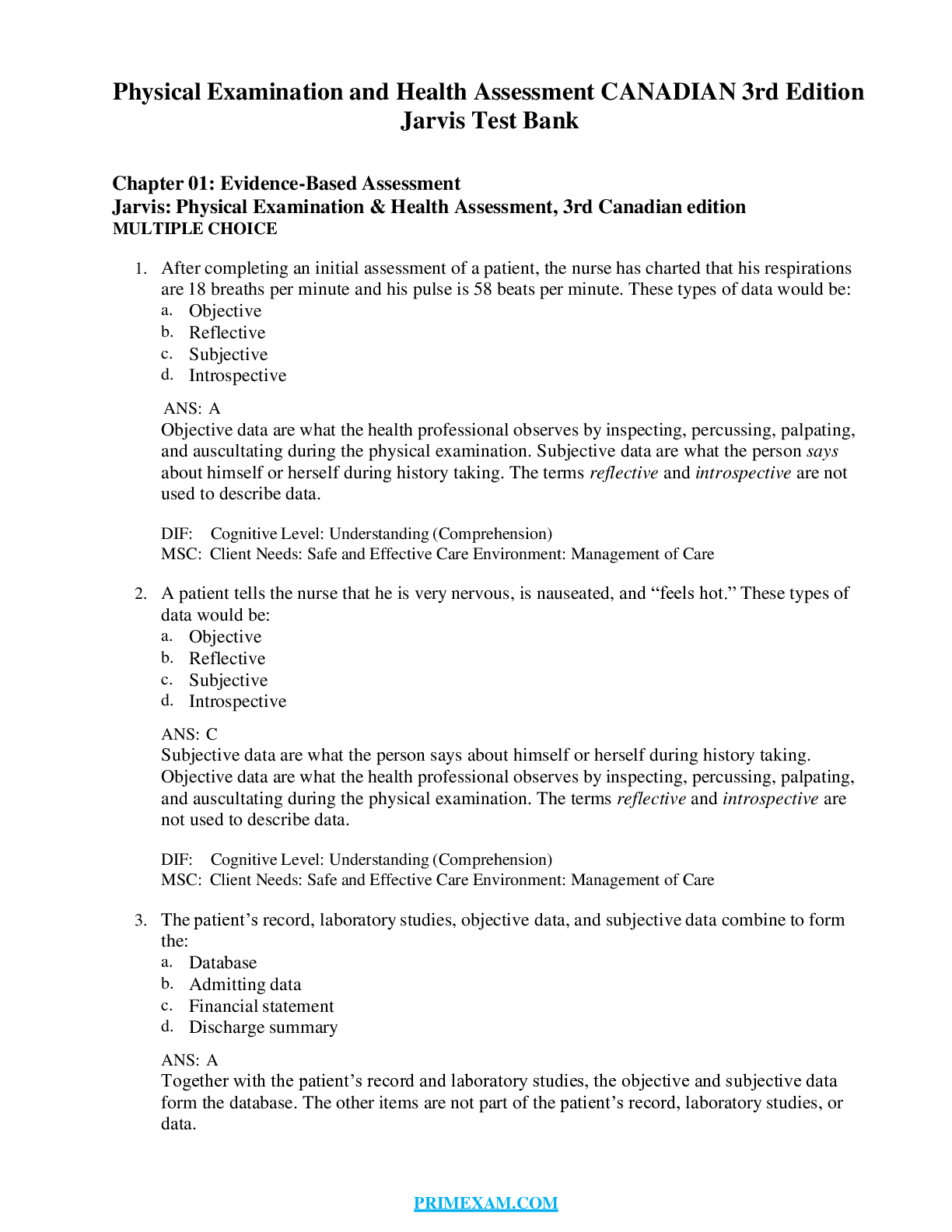

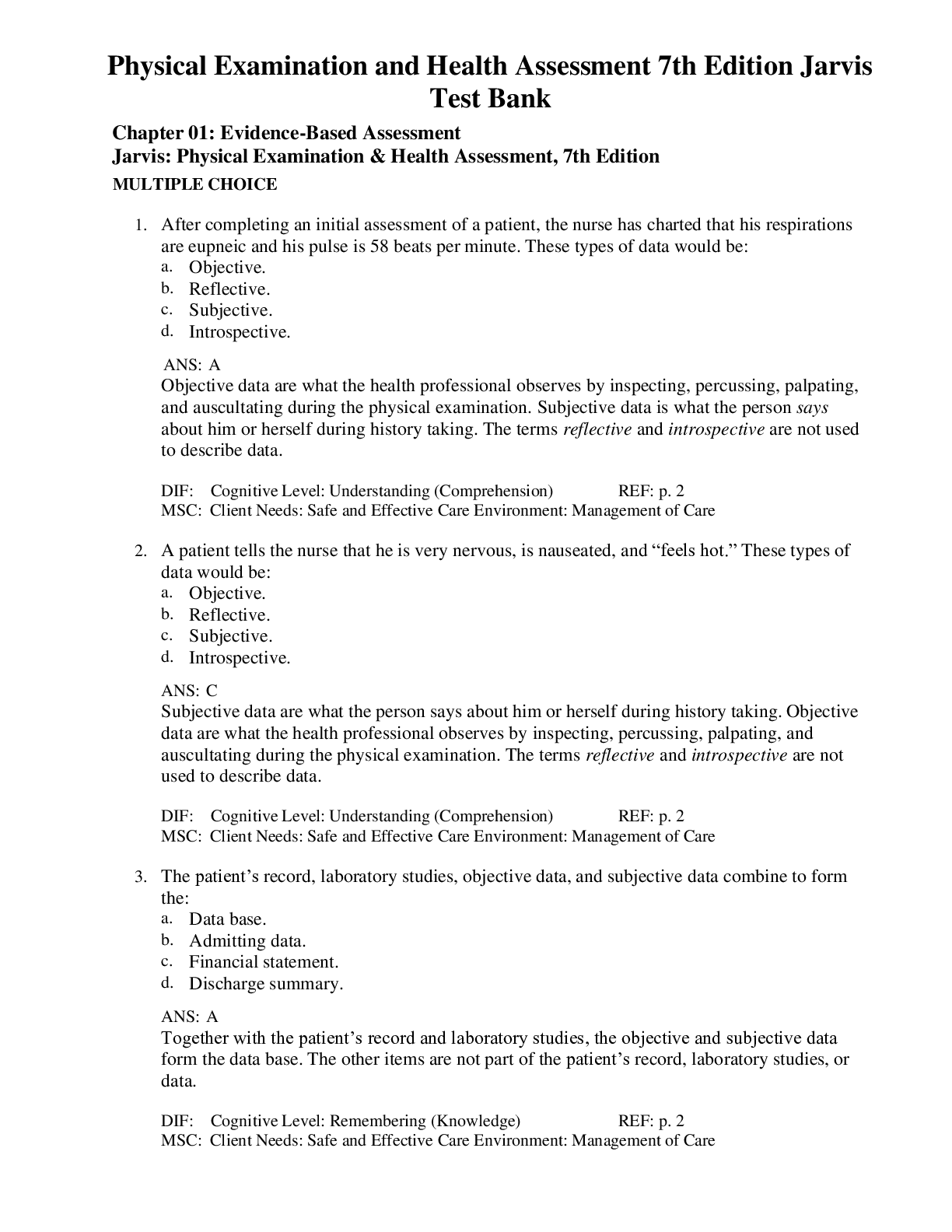
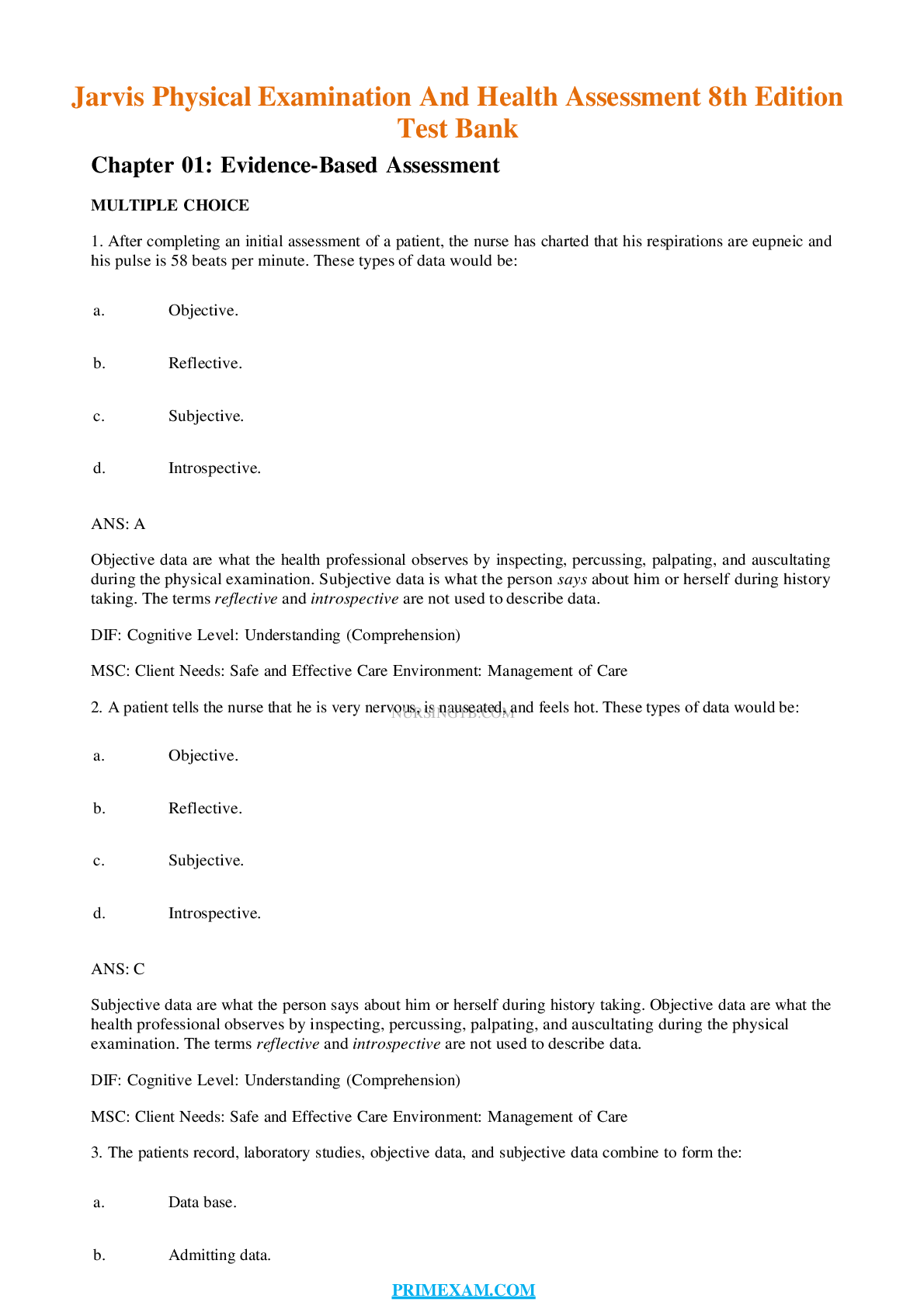
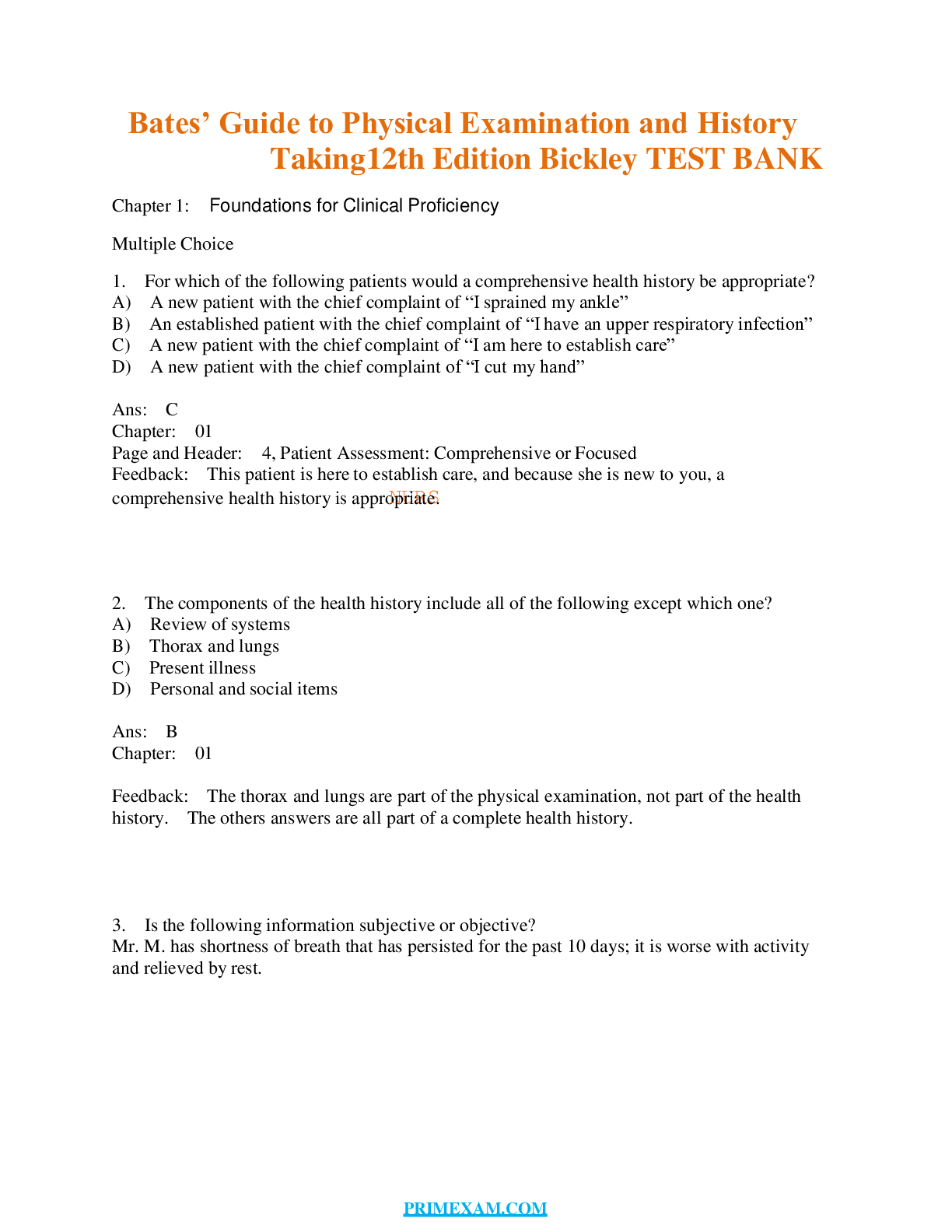

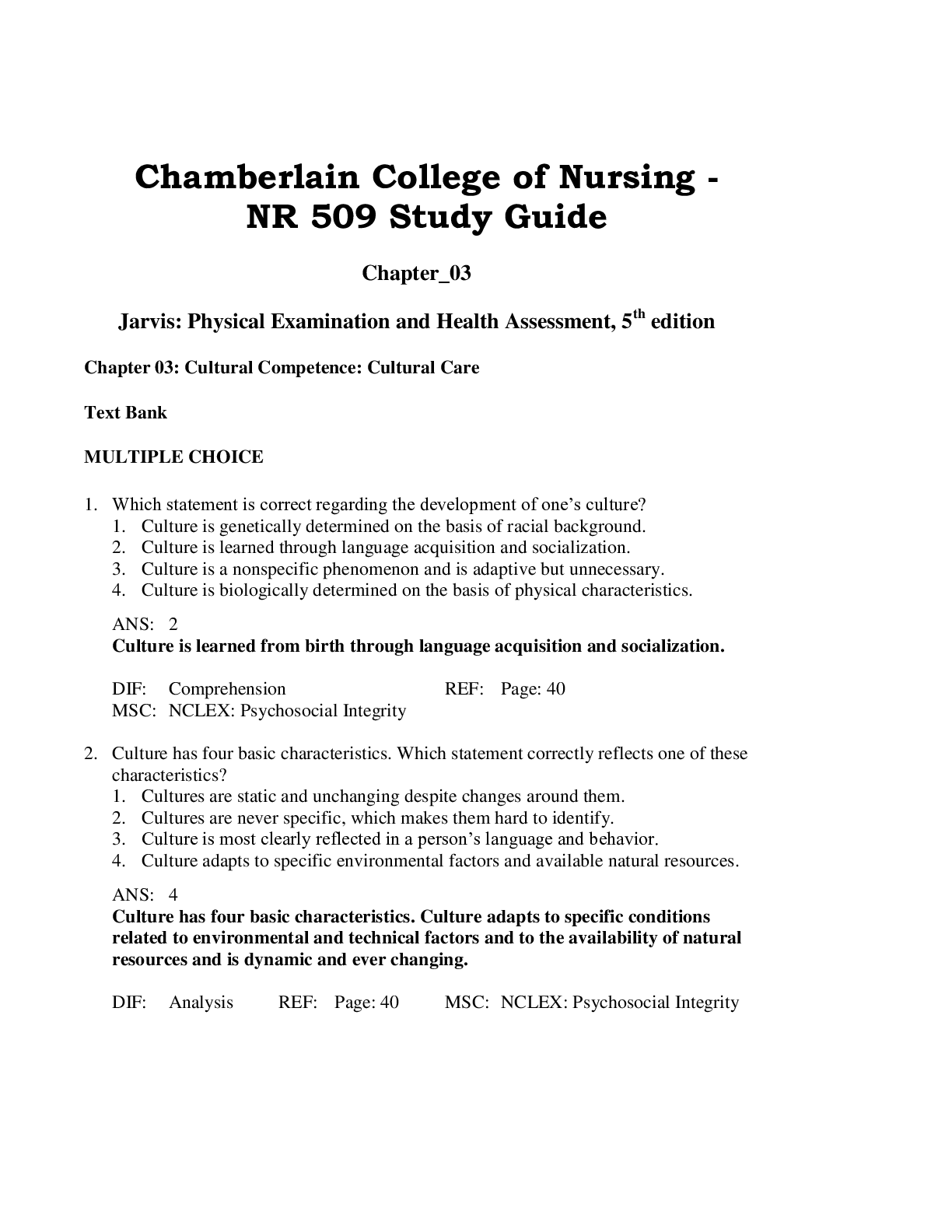


.png)

